EDITOR’S NOTE: Some photos below are not for the weak-stomached.
I’m shooting scenic footage in an unknown and rarely visited place in southern Idaho called Curlew National Grasslands. Even more unknown is the reason why a man is on the roof of one of the outhouses. Above the short sea of sage and sedge, I can see him shuffling around near a black pipe. That pipe vents the unmentionable fumes festering inside that small building no one wants to enter, but eventually everyone has to.
I unhinge my camera from tripod and make a run for the restroom. Chris Colt, Caribou-Targhee National Forest wildlife biologist, is at the base of the ladder leading up to field technician Drew Retherford. Retherford is on the vault toilet’s roof with a drill. The exchange goes something like this:
“What are you doing?” I ask.
“Putting a screen on the vent to keep birds out,” Colt says.
“Wait. What? Birds in the bathroom?” I say stunned.
“In the worst part of the bathroom and more often than you think.”
I’m grossed out and fascinated at the same time. I dig for facts while staring at a situation so disgusting I should look away, but I can’t help myself.
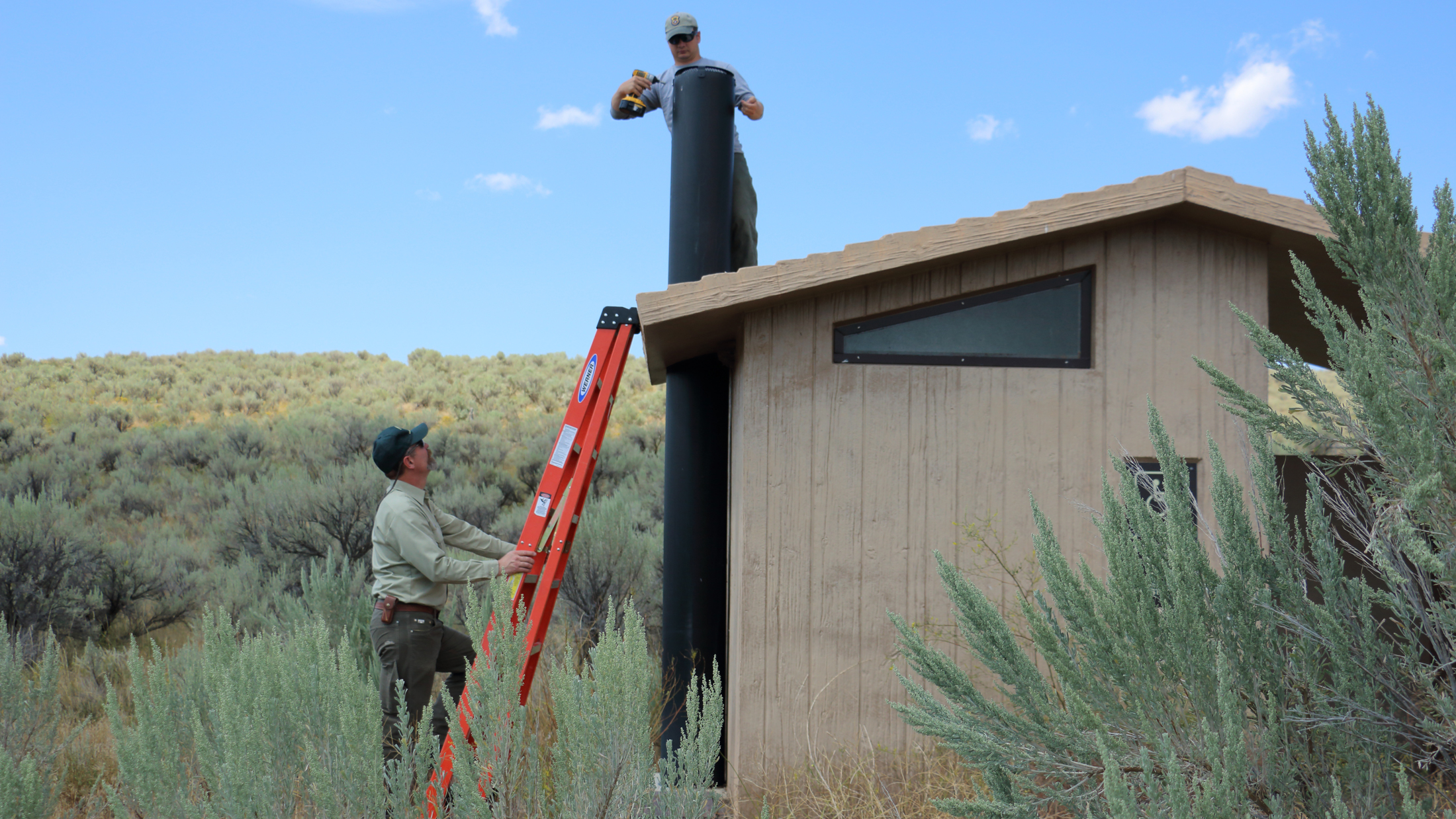
“That large diameter pipe is pretty enticing to certain species of wildlife like cavity nesting owls,” Colt says. “They see it as a tree cavity, like a tree with the top broken off that’s rotted inside. They climb down in there and maybe make a nest and then they can’t get out.”
And I don’t want to go in, but Joe Foust will. He’s the biologist who rescued a boreal owl in a Boise National Forest bathroom in 2010.
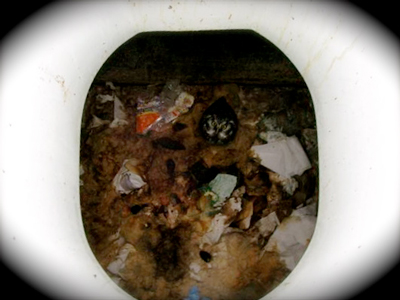
“When I got there, there was a post-it note on door, ‘Owl in toilet. Don’t use. Go down the road for other toilet.’ I looked down there and sure enough, he was just sitting there looking up at me,” says Foust, Boise National Forest wildlife biologist. “It got a little messy when I tried to get him in the net. He didn’t fare well after that. Nor did I. He went ballistic and started bouncing up and down and just got soaked.”
So did Foust who took a few unpleasant pictures of the retrieval operation deep in the bowels of the campground bathroom. Those pictures ended up at the Teton Raptor Center in Wilson, Wyoming.
“There are very few studies of what’s down in a vault toilet. Stuff is just pumped out and it’s not a sexy thing to study, but it happens all over the country with all kinds of cavity nesting birds,” says David Watson, Teton Raptor Center Poo-Poo Project development director. “Cavity nesting birds are looking for that quiet, dark space. They don’t realize that pipe sticking up out of the toilet is a death trap for them.”
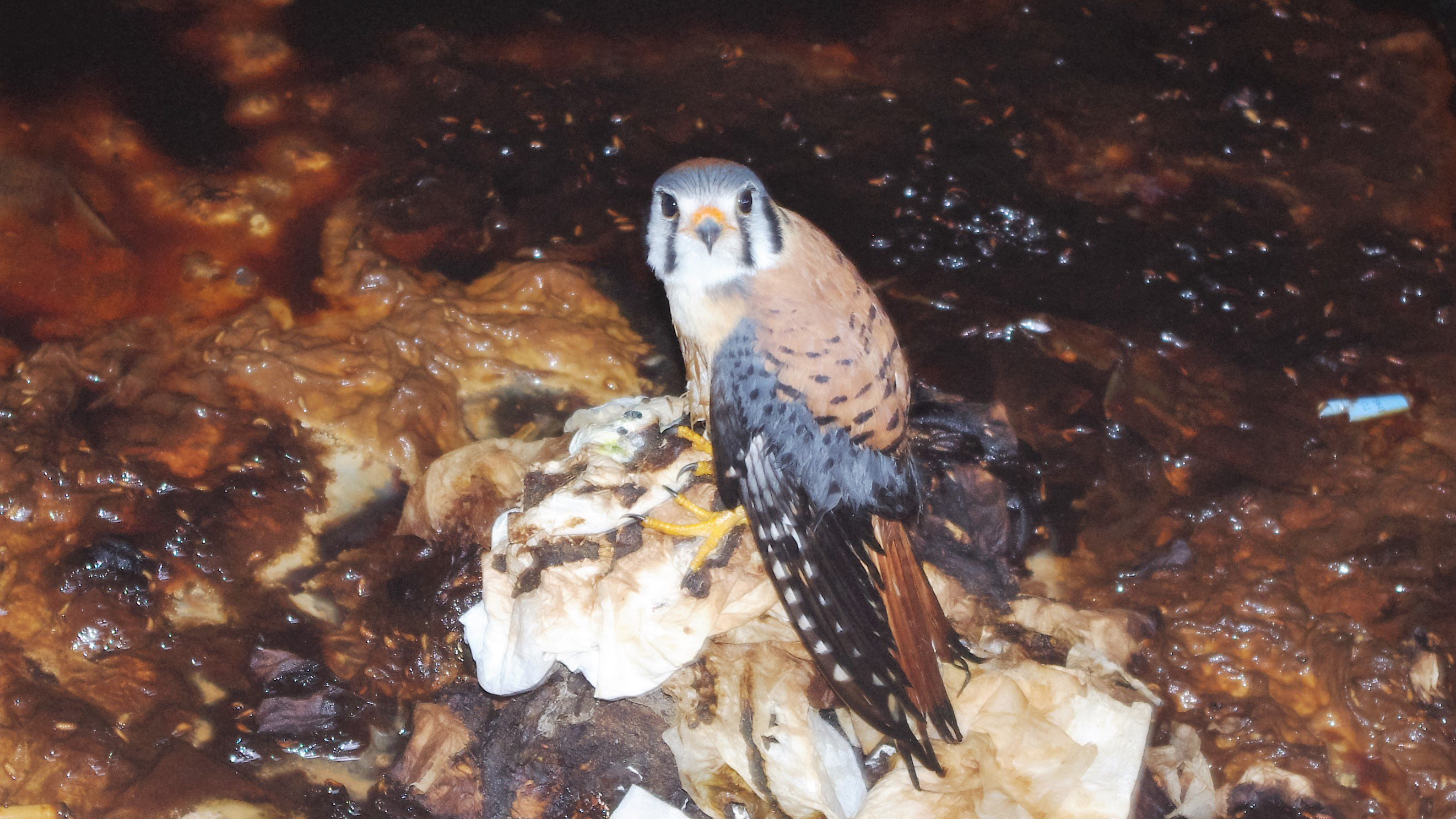
Watson is proudly known as the ‘Poo-Poo King.’ He’s the director for the center’s Poo-Poo Project, that’s short for Port-O-Potty Owl Project. He’s also one of the creative minds behind the 12-inch Poo-Poo screen keeping birds out while also letting the stink out. The one-piece, steel screen, selling for $29.95, comes with four screws and installs in five minutes. Government agencies and non-profit organizations in all 50 states are installing them. Most of the vented vault toilets are on public land in remote places where the commute costs more than the construction project.
“The biggest difficulty is the time it takes to drive to your next toilet,” Colt says. “You get there, there’s maybe two toilets on a site, it takes 10 to 15 minutes and you’re done and moving on.”
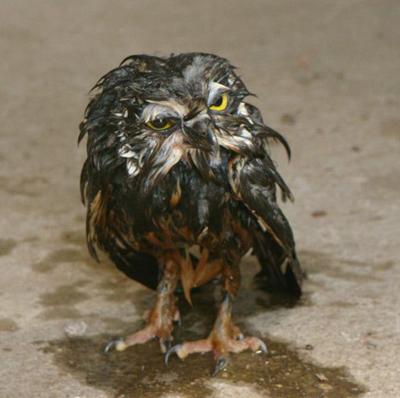
The Teton Raptor Center sold its 10,000th Poo-Poo screen July 31 to, ironically, a concrete company in Montana that makes vault toilets. While 10,000 sounds like market saturation, that’s really just a small drop in the bucket when you consider the overwhelming number of outhouses nationwide not to mention other types of pipes.
“Chimneys, irrigation pipes, mining claims. There’s just a lot of open pipes and birds and pipes just don’t really work well together,” Watson says. “If we can do our small part to help with one aspect of it, we’re making a difference in the conservation world.”
Colt agrees. He’ll have every outhouse, 25, in the Westside Ranger District screened this year. I’ll verify that by looking up at the pipe instead of down into the hole the next time I visit the Curlew.
“I hate to see some owl go down there, get stuck and get killed, or worse be still alive and have to be fished out,” Colt says. “People can argue that it’s crazy, but if you can stop one owl from going down there, it was probably worth it.”
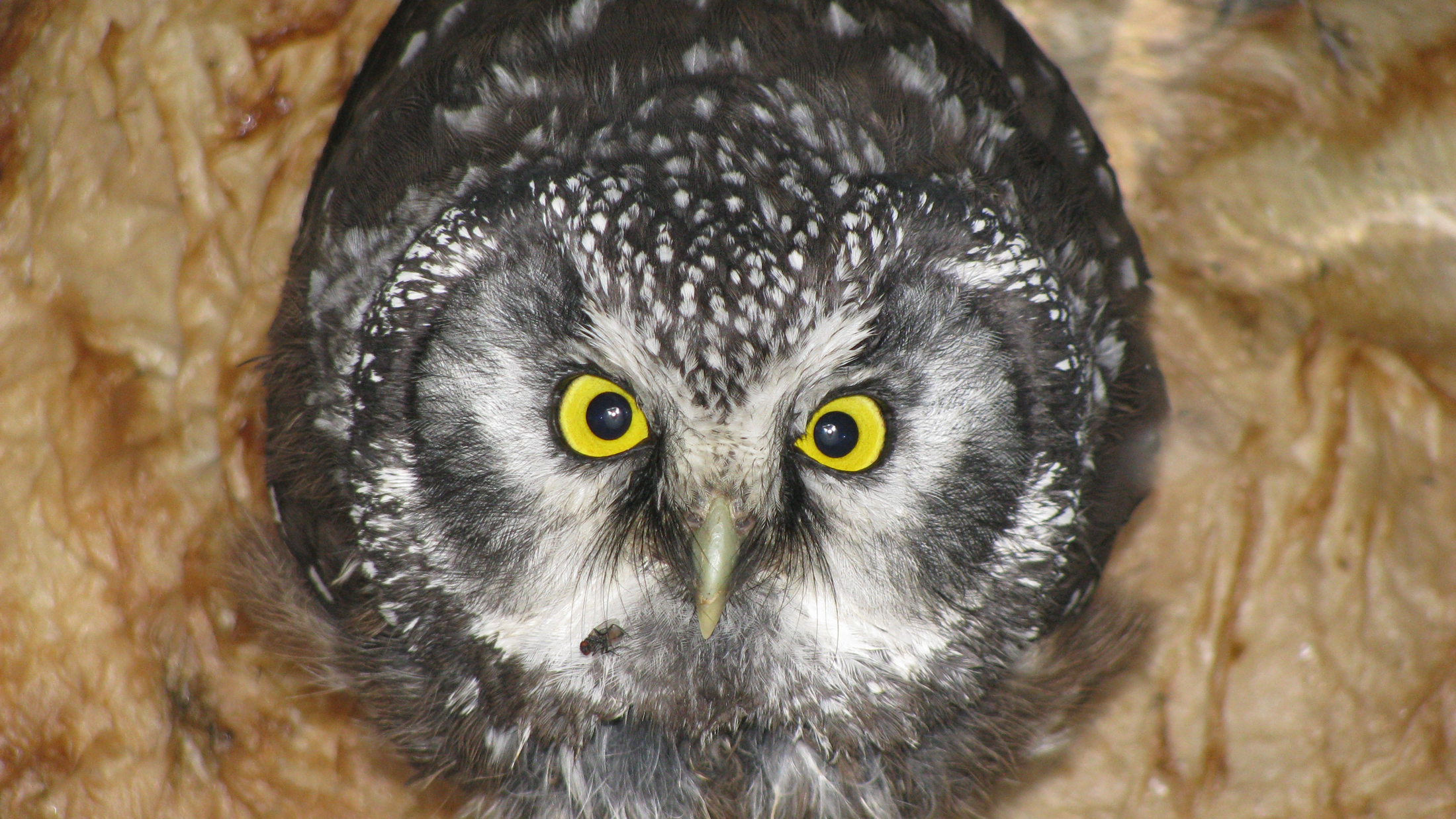
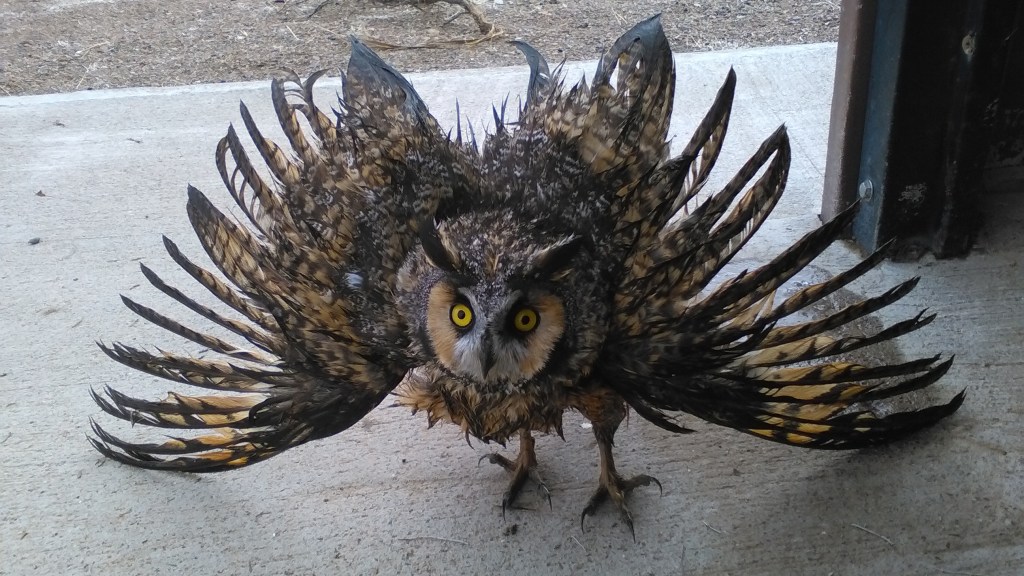



Also put a cap on chimneys. I found out the hard way. I had two dead squirrels taken out of mine and then put cap on it to prevent it from happening again.
reminds me of the time I almost sat on a blue racer snake,when I used the bathroom up in northern michigan.he bit me once ,but I managed to catch him and let him go outside.
This was both informative and hysterical. She is a real comedian and I learned a lot of fascinating facts. It was made fun! Thank you!
I once entered an outhouse to find a bat in the vault. I am not sure if he came through the door or through the pipe, but either way, I would think there is likely many mortalities in outhouses than just birds…
How great is it that in this time there are people who care this much about these creatures – enough to figure out exactly how to protect them from themselves!
Not enough of that kind of thought & care going on right now.
Hooray for you Chris Colt and others like you!Laura Hackler
I’m a bird rehabilitator (primarily raptors), & I’d never heard of this particular bird accident. So glad screens are going in, & hope those reading about it, & using outdoor toilets, will keep an eye peeled for vent pipes that could use screens, & let the nearest ranger district know about the problem. There was no mention in the article about rehabilitation efforts for the unfortunate birds, so do hope some effort was made to locate a rehab facility willing to clean them up & ready them for re-release. They can’t just be hosed off & released, as they could become sick from the exposure to so much filth. They’d need some time to rest, be properly fed, & cared for before release. Anyone with a chimney should have an appropriate screen on it, especially wood stoves. Ours has a raised roof type screen that keeps rain out, with screen sides so the smoke can escape. We all need to think about the needs of the denizens of nature in our civilized world.
Who would have EVER thunk! I probably won’t be able to use a park facility again without checking for a screen, and talking to maintenence if there isn’t one. I guess that’s a good thing. Thanks for the story!
For dirty stories, go to the Nature Conservancy’s website?? Who knew! I recall a dark and scary night when I was new to barred owls: this one lit on the roof over my bedroom and let loose his hoot and growl. I came out of bed thinking somebody had started World War III and looking for a weapon; if I’d had a gun would probably have drilled him straight through the ceiling. We’ve made our peace since; nowadays I actually enjoy their wee-hour conversations. I’d hate to think of any of their relatives suffering such a degrading fate. May the Great Pumpkin bless your work, and Happy Halloween to you all.
A solution to this problem could be requiring the outhouse/public toilet makers to include the screen on the vent pipe during the manufacturing process. This would prevent further bird injuries and death and also save the time and effort of a person having to install the screen.
Why don’t they have a standard when making these out houses. Have the builder of these out houses be required to include a screen mesh on each vent? That would make a simple solution.
Paul J Malchiodi
San Diego CA. 92110
Why did it take so long to come up with a solution to protect cavity nesting birds when a screen could have been installed when the outhouse was built onsite or installed?
Thank you so much for this work! Poor dears!
I hope it becomes a legal requirement to install the pipe screens on any new outhouses built in the future.
Stranger than fiction…
I have a basketball backboard on a pipe and know a baby bird got down there and I sure couldn’t get it out. I think it was a cactus wren. I could hear the scratching on the inside of the pipe.